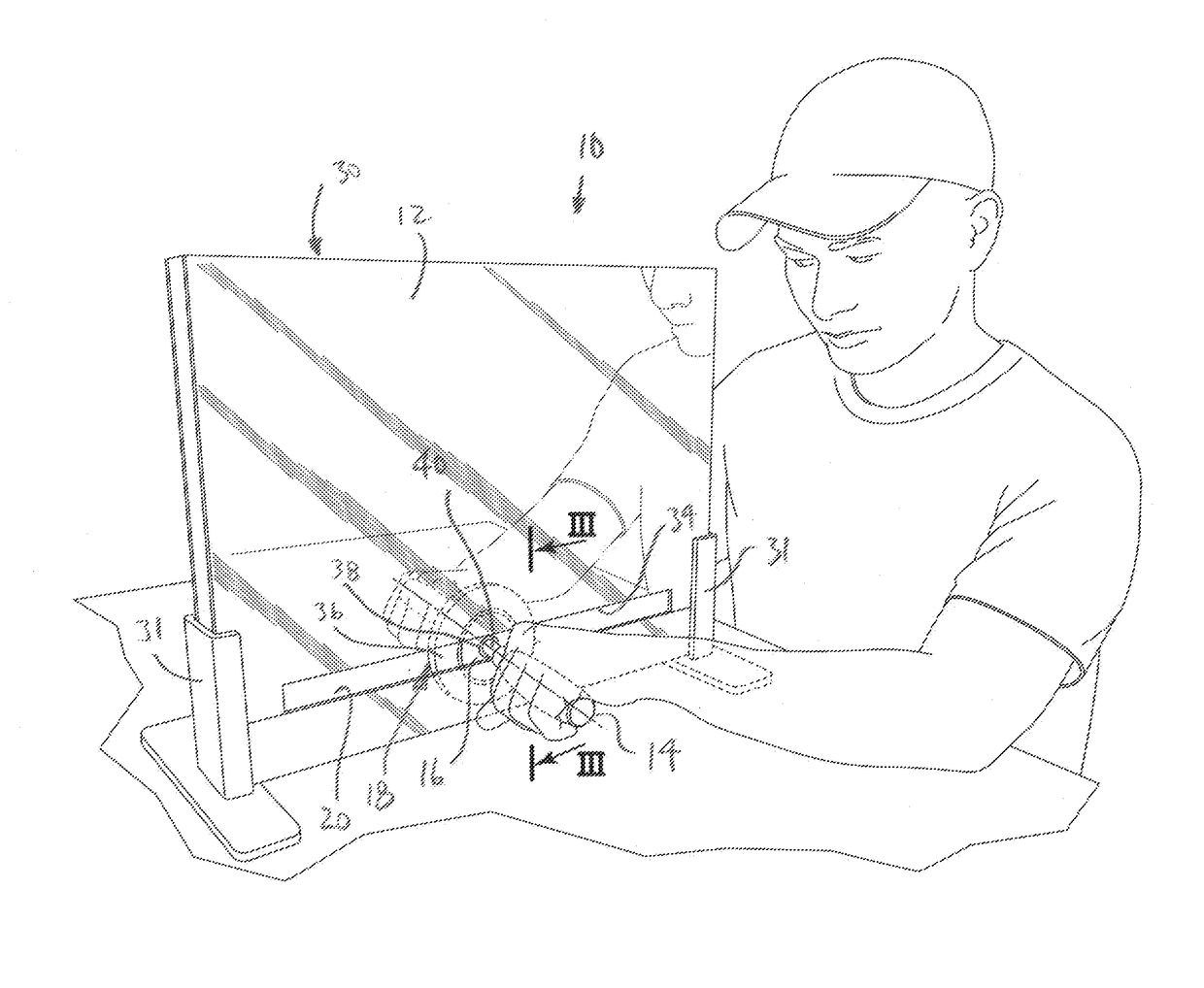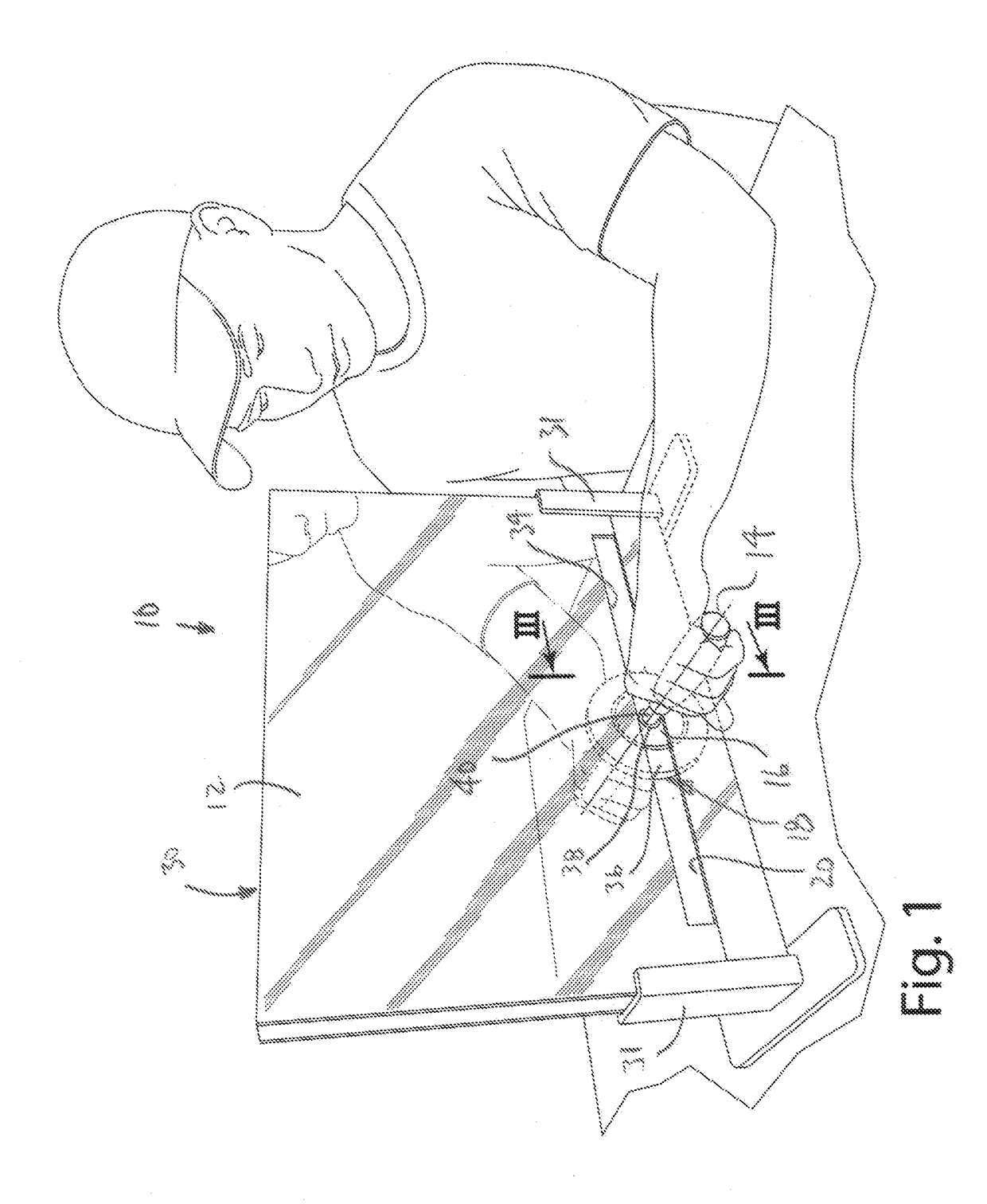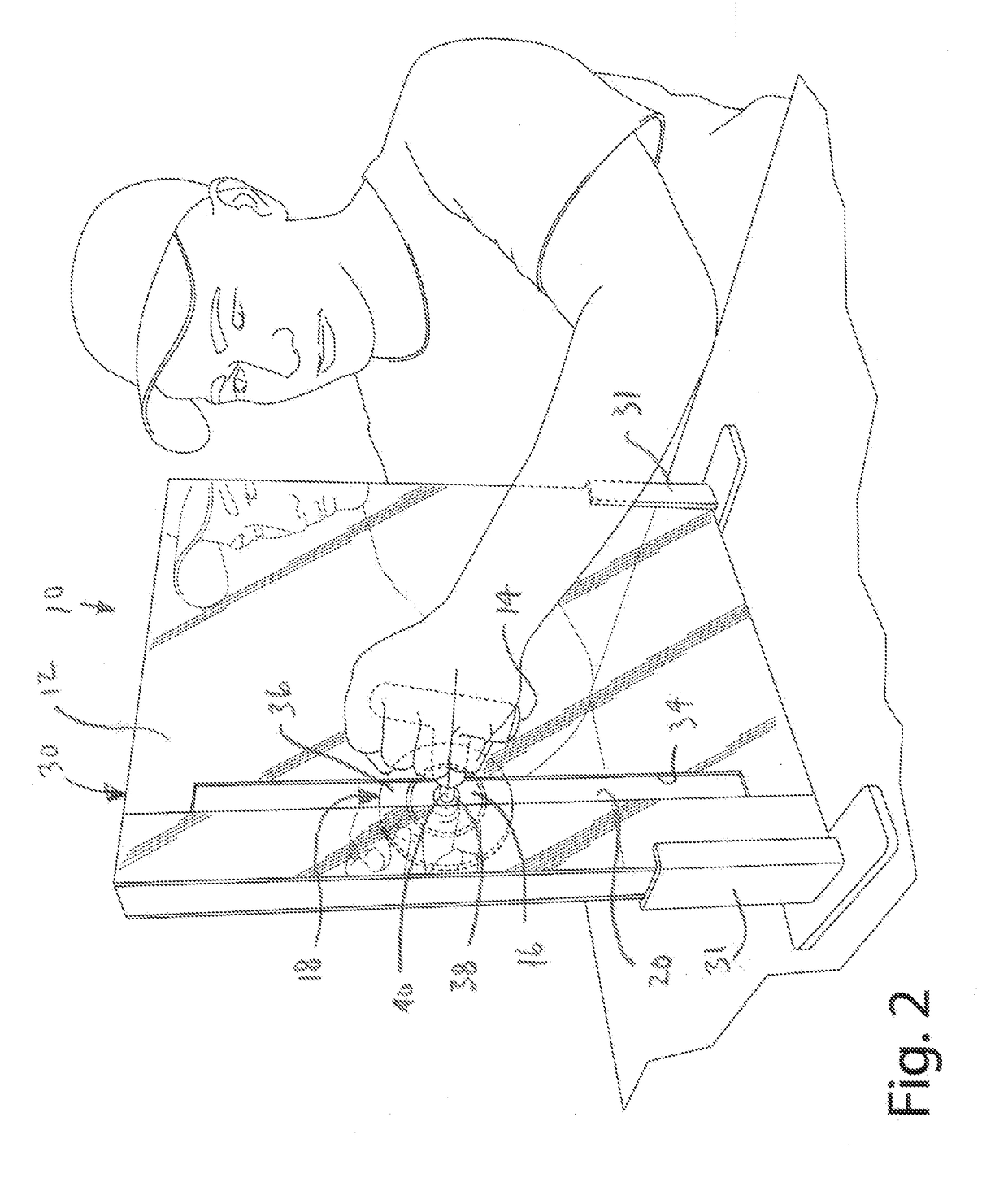Occupational therapy device
a technology of occupational therapy and devices, applied in the field of occupational therapy, can solve the problems of impaired ability to manipulate objects, difficulty in reciprocal functional activities (e.g. both hands performing the same task), and impaired hand placement for reaching, so as to reduce the resistance of the brake lever, simple and effective, and expand the effect of the devi
- Summary
- Abstract
- Description
- Claims
- Application Information
AI Technical Summary
Benefits of technology
Problems solved by technology
Method used
Image
Examples
Embodiment Construction
[0032]A. Overview.
[0033]Utilization of a variety of functional tasks with mirror therapy may resolve problems stated in the background. In one embodiment, the present invention aims to provide secured symmetrical functional objects for manipulation on either side of the mirror and facilitate symmetrical functional use of bilateral extremities using improved proprioceptive cues. Often times after an injury, an individual may not have an accurate localization of touch or knowledge of where the affected extremity is in relation to her / his environment. Individuals use vision to accurately motor plan and execute grasping of an object. When these three sensations are impaired during the use of mirror therapy, decreased functional use of the affected limb occurs. In occupational therapy, meaningful and purposeful activities are used as a therapeutic modality to improve functional use. These activities are graded to improve function. Since the individual with the affected limb has difficult...
PUM
 Login to View More
Login to View More Abstract
Description
Claims
Application Information
 Login to View More
Login to View More - R&D
- Intellectual Property
- Life Sciences
- Materials
- Tech Scout
- Unparalleled Data Quality
- Higher Quality Content
- 60% Fewer Hallucinations
Browse by: Latest US Patents, China's latest patents, Technical Efficacy Thesaurus, Application Domain, Technology Topic, Popular Technical Reports.
© 2025 PatSnap. All rights reserved.Legal|Privacy policy|Modern Slavery Act Transparency Statement|Sitemap|About US| Contact US: help@patsnap.com



